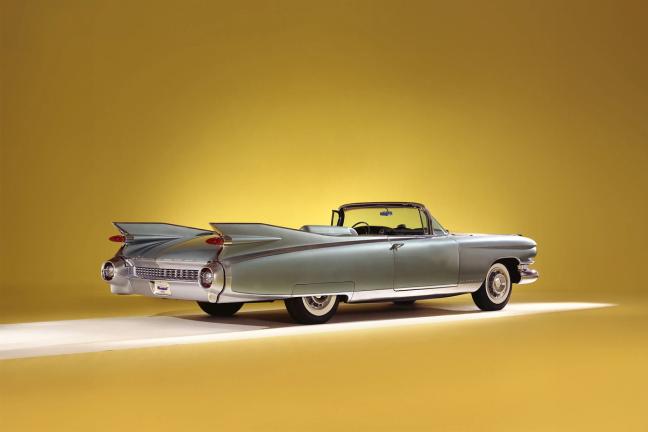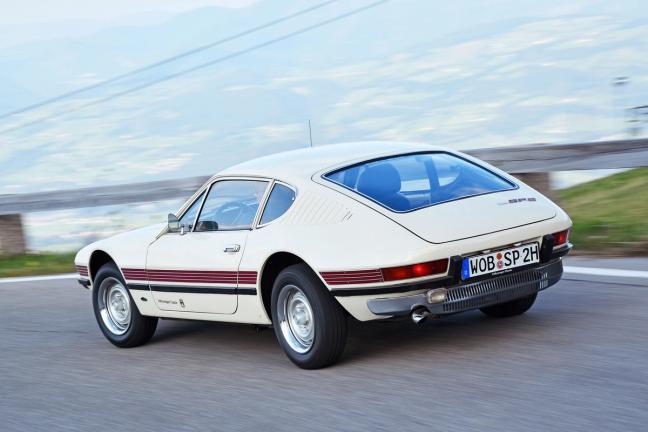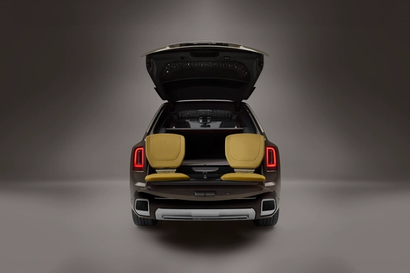Nothing encapsulates a time or feeling in history quite like a car does. From the front fenders to the rear wheels, and even the exhaust, every inch of many cars is carefully considered and crafted to either appeal to a certain section of society or to perform a job with ruthless efficiency. And, soon after the first cars started rolling off the line, automotive companies were quick to catch on to the fact that styling could help sell their product.
Over 100 years ago, visionaries, such as Harley Earl, started styling and customising cars for young, up-and-coming stars falling out of the newfound film industry in Hollywood. Earl would eventually become General Motors' very first head of design, and the impact of his work would ripple around the world.
Now, with over a century of this type of design behind us, it's time to celebrate. The automobile has become an ‘overwhelming symbol of emancipation, power and, yes, sex,’ says motoring journalist Jason Barlow in his new book, The Atlas of Car Design: The World's Most Iconic Cars, which charts 650 of the greatest car designs from every continent.

The Atlas of Car Design: The World’s Most Iconic Cars; By Jason Barlow; Published by Phaidon
With so many to choose from, here's our selection of what we think are the very best…
From North America… the Cadillac Eldorado Biarritz

Nothing sums up North America's age of excess and fascination with the future better than the 1959 Cadillac Eldorado Biarritz. Chrome fenders, fins, and taillights shaped like rocket boosters, the Eldorado marked a feverish high-point in car styling hysteria.
Even General Motors designer Dave Holls referred to the year the Eldorado was born as "Cadillac’s year of total excess." At nearly 6m-long, and with 114cm-tall tail fins that were inspired by the P-38 Lightning fighter aircraft, the car was a snapshot of the US's post-war obsession with style and extravagance.
From South America… the Volkswagen SP 2

Despite the continent's population size, South American car marques are few and far between. Surprisingly, one of the biggest names in personal transportation on the continent is Volkswagen, which has been making cars in São Paulo since 1959.
One of its greatest-looking efforts was the short-lived SP 2, which was created in 1973 to turbocharge VW's staid image in the region. With its low profile, long bonnet and fastback rear, the SP 2 did just that – and its rear-engined and rear-wheel drive added a dimension of sporting prowess, with a peppy 1.6-litre engine that put out 74bhp.
From Europe… the Maserati A6GCS-53

One continent known for its beautifully styled cars is Europe. Look north, east, south and west and you'll find seemingly endless examples of four-wheeled artworks dating back to the dawn of the motorcar. One nation, however, is particularly hard to ignore in the design department. After the war, Italian styling houses and coachbuilders went into overdrive, penning some of the greatest designs the world had – and has – ever seen.
Although the Ferrari 250 GTO has become the buzzword for beautiful car design, it was cars such as the Maserati A6GCS-53 that set the pulses of European elites running in the early 1950s. With its aggressive snout, squat proportions and purposeful stance, the A6GCS-53 was born from the legendary Mille Miglia competition after a rain-lashed 1952 race prompted the wealthy competitors to ask Maserati for a hard-topped racer. Five A6GCS-53s resulted – the work of Aldo Brovarone, a designer at Pininfarina – and his work is still cited as a major influence on Maserati's current crop of sports coupes.
From Australasia… the Ford Coupe Utility

With few native car companies to choose from, Ford is a manufacturer that's certainly made its mark in this corner of the world over the years. Establishing a factory in Melbourne as early as 1925, the carmaker created the Coupe Utility after Hubert French, general manager of Ford Australia, received a letter from a farmer's wife asking why the company hadn't yet produced ‘a two-in-one vehicle [that] we could go to church in on a Sunday and which can carry our pigs to market on Mondays?’
From that moment, the 'ute' was born – a car that would become a vital piece of the country's subculture.
From Asia… the Suzuki Jimny

Japan has an unparalleled knack for shoehorning practicality and efficiency into impossibly small packages. Take the Suzuki Jimny, for example, which spawned the small 4x4 movement in the early 1970s. Under 3m-long, with functional styling and powered by a plucky 359cc engine, the Jimny was as lightweight as a pocket-sized city car and as sure-footed as a mountain goat, ensuring over 5,000 examples of the model were sold in Japan in the first year of release.
After two more seats were added in the back, the Jimny was exported to the US, coming up against the country's many Goliath-sized trucks before its popularity spread around the world. Decades later, the Jimny is still in production, with over three million sold worldwide to date.
From the Middle East and Africa… the Autocars Sabra Sport

Better known for its spectacular scenery and wilderness than its motor trade, there's a small but perfectly formed selection of cars unique to the region. One particular oddity is the 1960s Sabra Sport, from Israeli car maker Autocars.
Created with the help of British brand Reliant – makers of the infamous three-wheeler – the first hundred-plus cars were made in the UK and exported to the US. With its long bonnet, wire wheels and dainty proportions, the car struggled in the performance department and sales dwindled until the company went bankrupt in 1970.
- The Atlas of Car Design: The World’s Most Iconic Cars; By Jason Barlow; Published by Phaidon, £100
Want more motoring content? Read our review of the Ferrari Roma Spider…
Become a Gentleman’s Journal member. Find out more here.

Become a Gentleman’s Journal Member?
Like the Gentleman’s Journal? Why not join the Clubhouse, a special kind of private club where members receive offers and experiences from hand-picked, premium brands. You will also receive invites to exclusive events, the quarterly print magazine delivered directly to your door and your own membership card.


